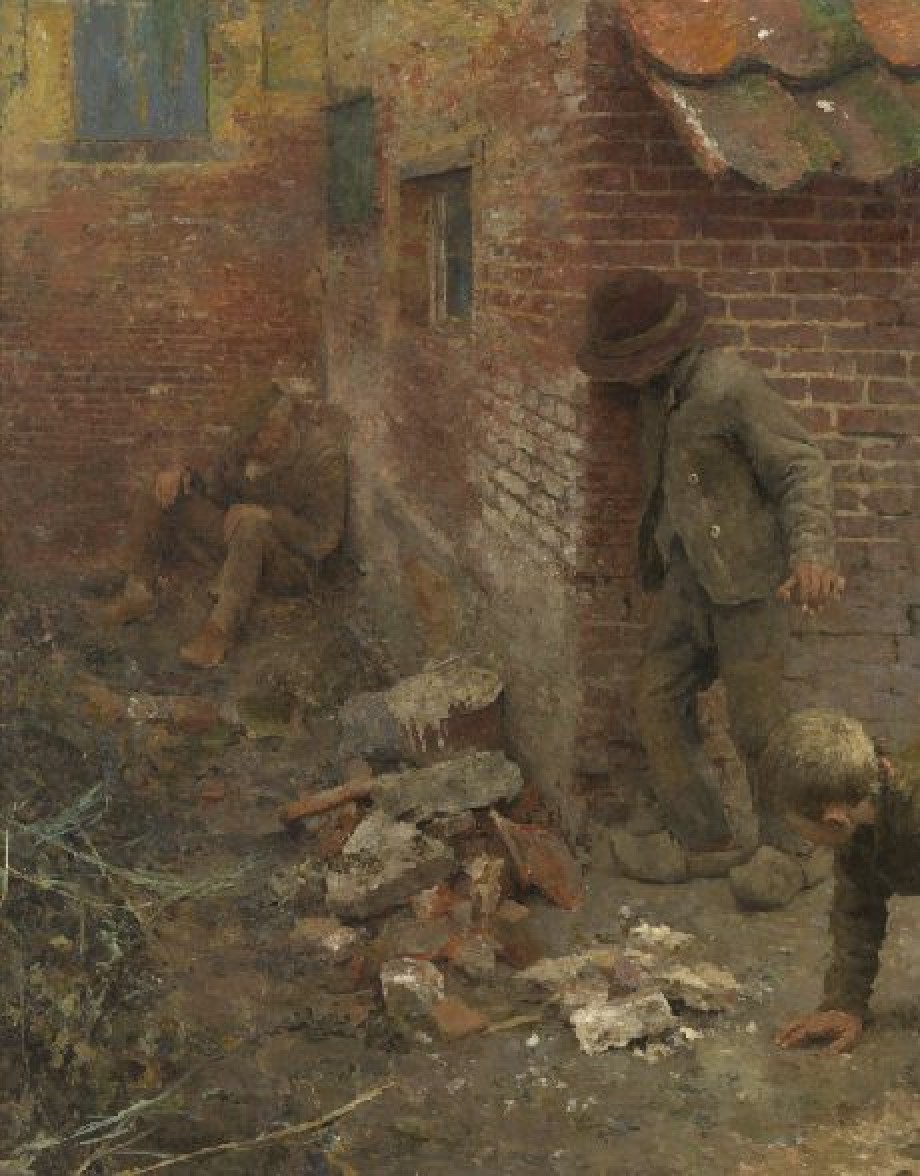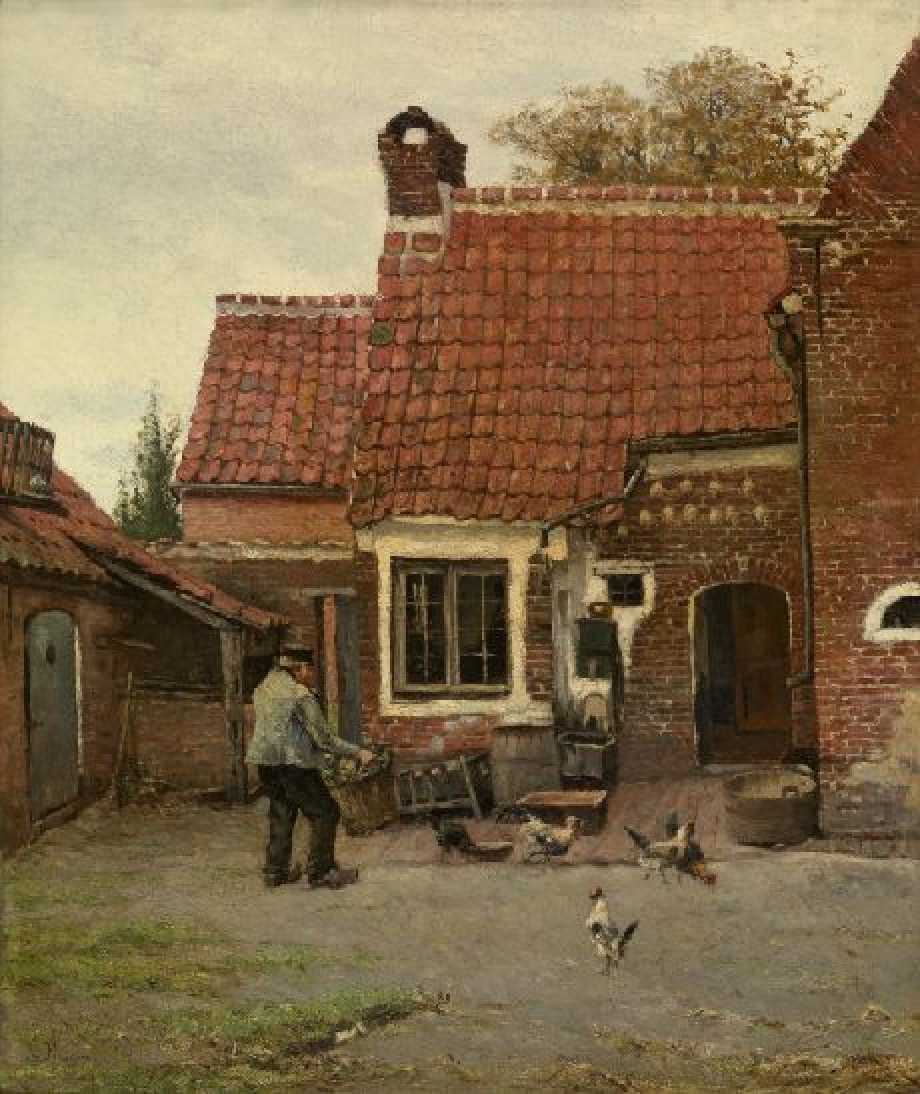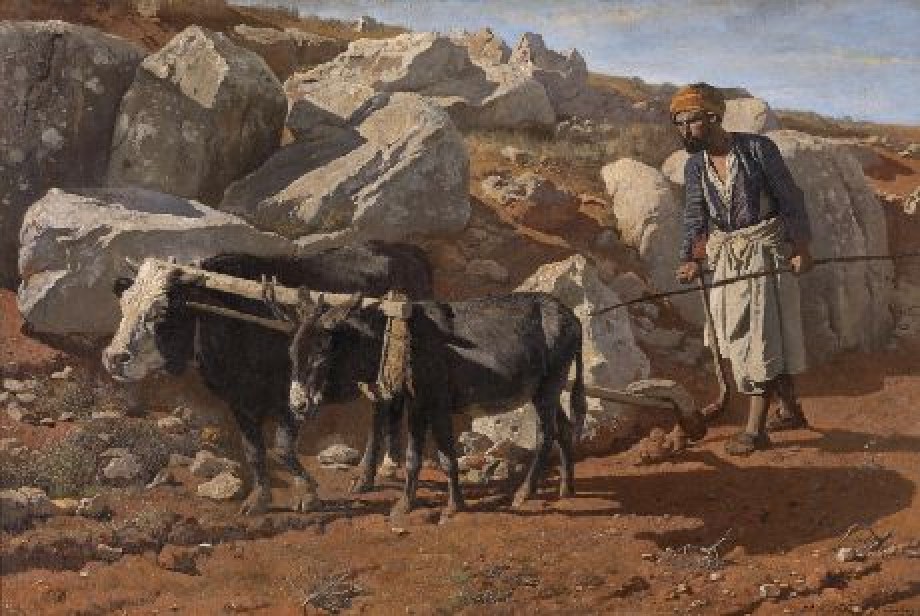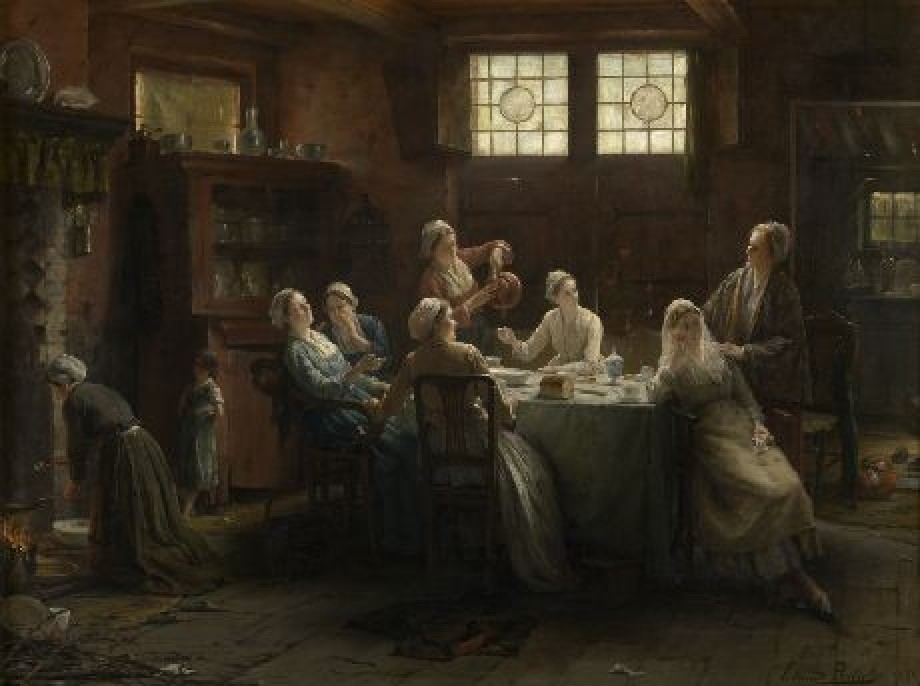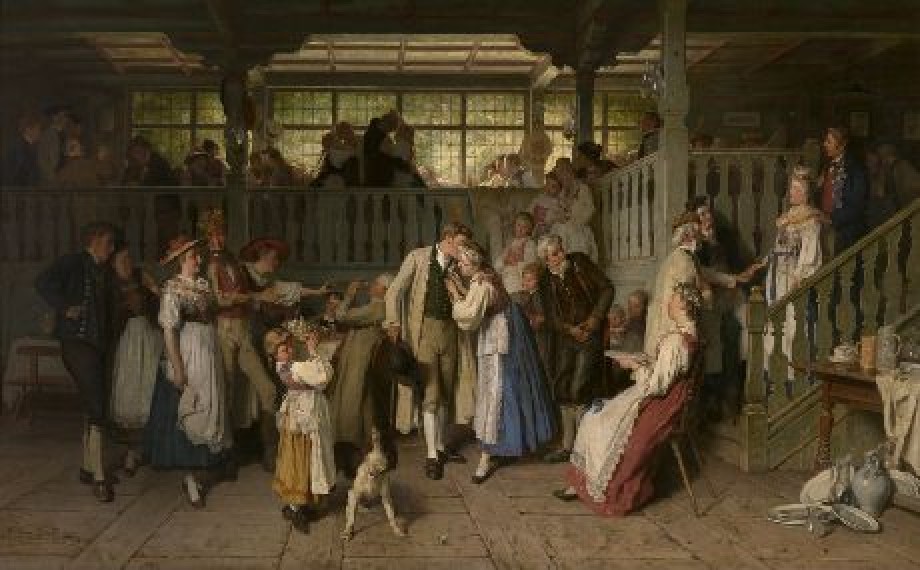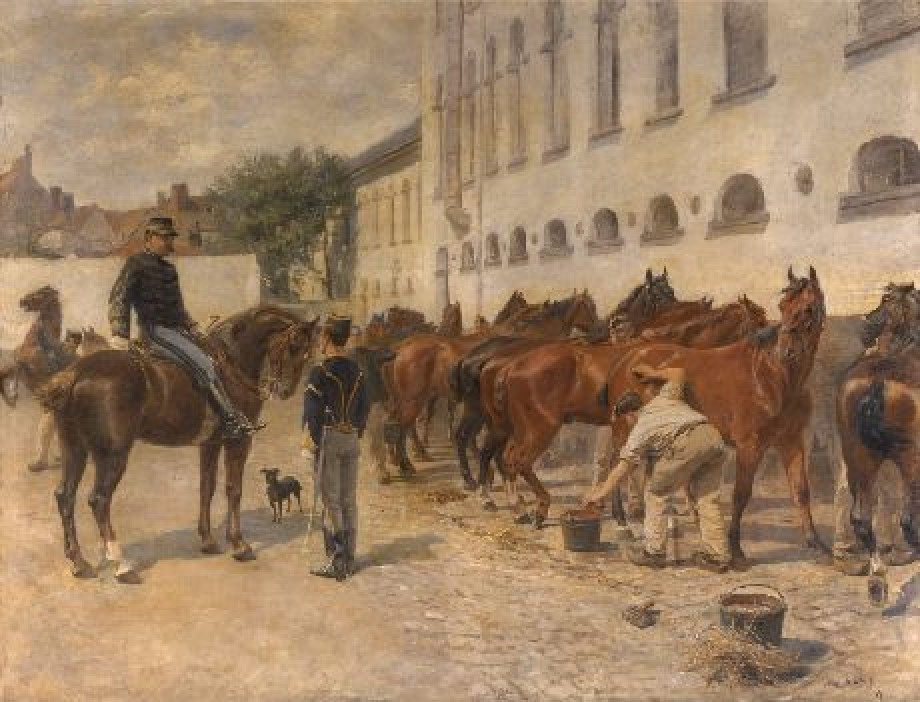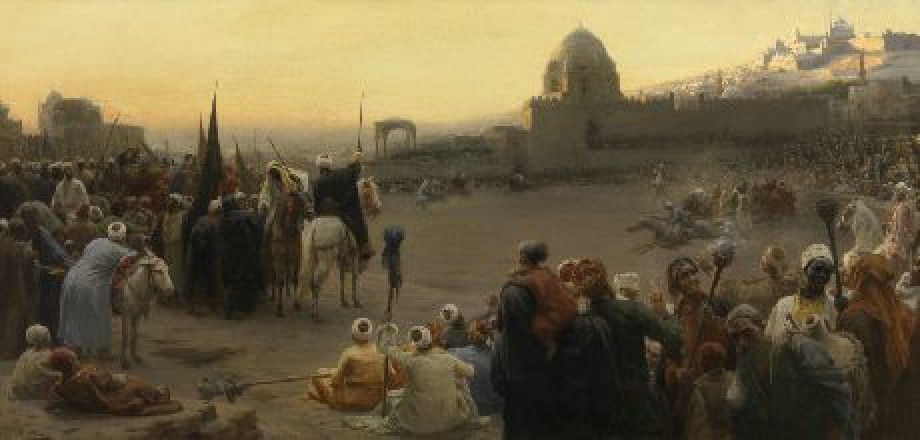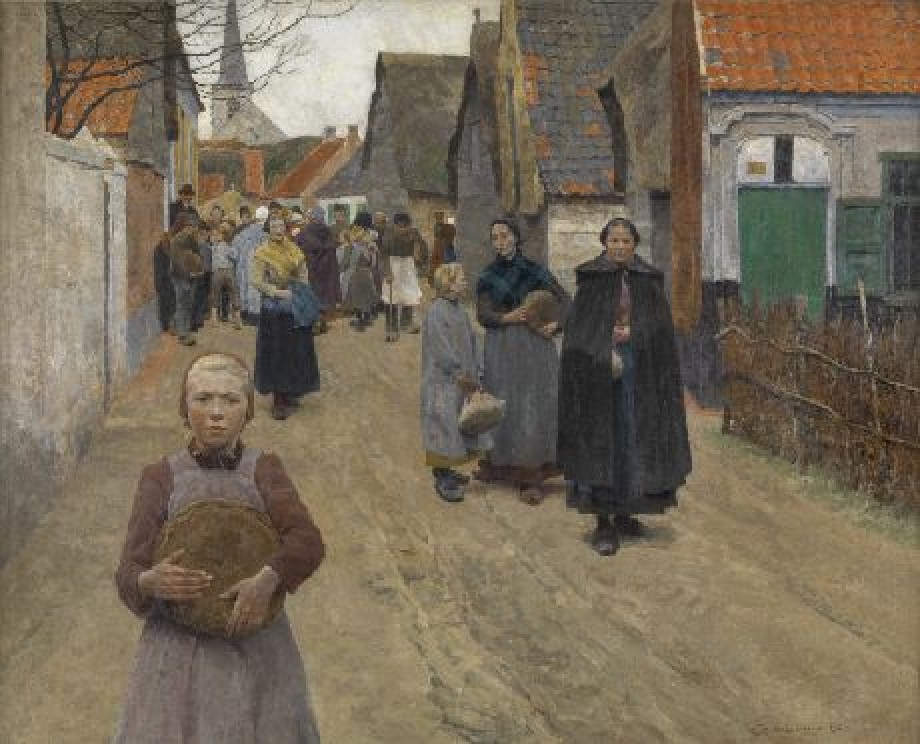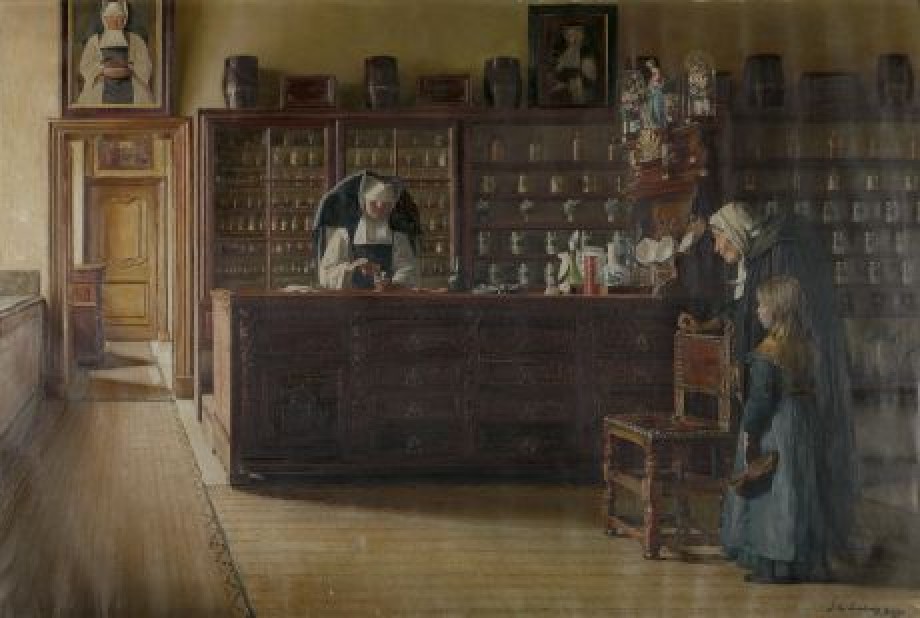The Laundress

Artist / maker
Henry Van de Velde (painter)Date
1887Period
19th centuryCollection
Royal Museum of Fine Arts Antwerp
New heroes A woman is hanging out the washing on a line in the garden. Is she dutiful and modest as she performs this everyday chore, or listless and mechanical? Might she even be taking her time outside to keep out of the way of a surly, drunken husband? If her task is joyless, it is in sharp contrast to…
Read more
New heroes
A woman is hanging out the washing on a line in the garden. Is she dutiful and modest as she performs this everyday chore, or listless and mechanical? Might she even be taking her time outside to keep out of the way of a surly, drunken husband? If her task is joyless, it is in sharp contrast to the summer sunshine that lights up the scene so cheerily.
The celebrated architect Henry Van de Velde trained as a painter in Antwerp. After graduating from the city’s academy, in 1883 he moved to Paris to continue his studies. There, he discovered the work of Edouard Manet and fellow Impressionists such as Auguste Renoir and Claude Monet. Van de Velde also admired the life and work of Jean-Francois Millet, who belonged to the Barbizon group of painters, named for a village in the forest of Fontainebleau, where they went to paint realistically in the open air. Their subject matter was the rural landscape and its peasant population – a new theme at the time. The Barbizon artists were the forerunners of Impressionism.
Van de Velde returned to Antwerp in 1886. Accompanied by his older colleagues Emile Claus and Adrien-Joseph Heymans, among others, he discovered the village of Wechelderzande near Antwerp.
There, in the Kempen heathland, artists and townspeople found the ‘unspoilt’ beauty of the countryside and locals still living an ‘authentic’ peasant life. The painters lapped up this subject matter, although the artistic establishment back in Antwerp was less enamoured at first with the results.
Like the much-admired Millet, the young Van de Velde wanted to grant anonymous peasants and ordinary working people a dignity previously reserved for saints and for historical or mythological heroes. The style and brushwork with which he sought to achieve this aim are most reminiscent of Manet.
Read less
